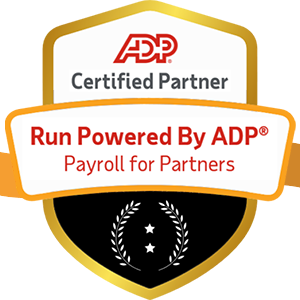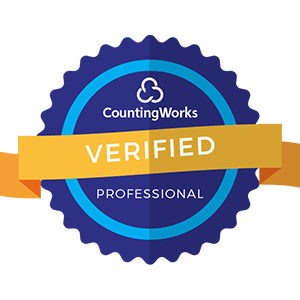
The AI Revolution in Payroll: Organizations implementing AI-powered payroll systems report 78% reduction in processing errors, 65% faster payroll completion times, and 89% improvement in compliance accuracy. Despite these benefits, only 23% of companies have adopted AI payroll technologies. Early adopters save an average of $2.7 million annually through reduced errors, improved efficiency, and enhanced compliance capabilities.
Payroll processing has historically been one of the most manual, error-prone, and regulation-heavy functions in business operations. Traditional systems require extensive human intervention for calculations, compliance monitoring, and exception handling, creating bottlenecks and risk exposures that modern businesses can no longer afford.
The complexity of contemporary payroll environments continues escalating as organizations manage diverse workforce arrangements including full-time employees, contractors, gig workers, and international staff across multiple jurisdictions. Each arrangement carries unique calculation requirements, tax obligations, and compliance considerations that challenge even the most sophisticated human processors.
Artificial intelligence emerges as a transformative solution that addresses these challenges while unlocking new capabilities previously impossible with conventional approaches. AI-powered payroll systems don't simply automate existing processes—they fundamentally reimagine how organizations approach compensation management, compliance monitoring, and workforce analytics.
This transformation extends beyond operational efficiency to encompass strategic capabilities that enable better decision-making, risk management, and employee experience improvement. Organizations that successfully implement AI payroll technologies position themselves advantageously for managing increasingly complex workforce challenges while reducing costs and improving accuracy.

The most immediate and measurable benefit of AI in payroll lies in its ability to eliminate human errors that plague traditional processing systems. These errors range from simple calculation mistakes to complex regulatory misinterpretations that can result in significant financial and legal consequences.
AI algorithms excel at processing complex calculation scenarios that challenge human processors. Multi-state workers, variable compensation structures, and intricate benefit arrangements require sophisticated logic that AI systems handle consistently and accurately across thousands of employees simultaneously.
Machine learning models continuously improve calculation accuracy by analyzing patterns in payroll data and identifying anomalies that might indicate errors or unusual circumstances requiring special attention. These systems learn from corrections and adjustments to prevent similar issues in future processing cycles.
Real-time validation capabilities check calculations against multiple data sources and business rules instantly, catching errors before they propagate through the payroll system or appear on employee paychecks. This immediate feedback prevents costly corrections and maintains employee confidence in payroll accuracy.
Predictive error detection analyzes historical patterns to identify situations where errors are most likely to occur, enabling proactive review and validation before problems manifest. This capability proves particularly valuable for complex scenarios involving overtime calculations, bonus distributions, or benefit adjustments.
AI-powered data validation ensures that information flows correctly between systems while identifying inconsistencies that might indicate data corruption or integration issues. These systems can automatically reconcile discrepancies or flag them for human review when automatic resolution isn't appropriate.
Intelligent data cleansing removes duplicates, corrects formatting issues, and standardizes information across different source systems without requiring manual intervention. This capability becomes crucial when organizations integrate multiple HR systems or acquire new companies with different data structures.
Cross-system verification compares data across multiple platforms to ensure consistency and identify potential synchronization issues before they affect payroll processing. This verification extends to time tracking systems, HRIS platforms, and financial applications that feed data into payroll calculations.
Regulatory compliance represents one of the most challenging aspects of payroll processing, with requirements changing frequently across multiple jurisdictions. AI transforms this challenge by providing continuous monitoring and automatic adaptation to regulatory changes.
AI systems continuously monitor regulatory sources including government websites, legal databases, and industry publications to identify changes that affect payroll processing. Natural language processing capabilities interpret new regulations and determine their impact on specific organizational payroll practices.
Automatic configuration updates implement regulatory changes across payroll systems without requiring manual programming or extensive testing procedures. These updates include tax rate adjustments, minimum wage changes, overtime rule modifications, and new compliance reporting requirements.
Jurisdictional complexity management becomes manageable when AI systems track different requirements for each location where an organization operates. These systems automatically apply appropriate rules based on employee work locations, residence states, and applicable local ordinances.
Real-time compliance monitoring evaluates every payroll transaction against current regulatory requirements, immediately flagging potential violations before processing completes. This proactive approach prevents compliance issues rather than discovering them after the fact.
Predictive compliance analytics identify potential risk areas based on historical patterns and regulatory trends. Organizations can proactively address these risks rather than waiting for audit findings or penalty notices to reveal problems.
Automated audit trails maintain comprehensive records of all payroll decisions and calculations, providing documentation required for regulatory audits while enabling rapid response to questions about specific transactions or employees.
Exception reporting highlights unusual situations that might indicate compliance issues, such as excessive overtime hours, missing documentation, or calculation anomalies that warrant human review before processing continues.
Penalty prevention algorithms calculate the financial impact of potential compliance violations and recommend corrective actions that minimize risk exposure while maintaining operational efficiency.
AI dramatically improves payroll processing speed and efficiency by automating routine tasks while optimizing workflows based on data-driven insights about process performance and bottlenecks.
Workflow optimization algorithms analyze payroll processing patterns to identify inefficiencies and recommend improvements that reduce processing time while maintaining accuracy. These systems can automatically reorganize task sequences and resource allocation for optimal performance.
Exception handling automation manages unusual situations that traditionally require human intervention, using decision trees and machine learning models to resolve common issues consistently and accurately.
Integration automation connects payroll systems with time tracking, benefits administration, and financial reporting platforms, eliminating manual data transfer while ensuring information accuracy and consistency.
Batch processing optimization determines optimal timing and sequencing for payroll runs based on system capacity, regulatory deadlines, and business requirements, maximizing efficiency while meeting all processing deadlines.
Intelligent workload distribution allocates processing tasks across available resources based on complexity, deadlines, and system capacity, ensuring optimal utilization of both human and technical resources.
Predictive capacity planning analyzes historical processing patterns to forecast resource requirements for upcoming payroll cycles, enabling proactive allocation and preventing bottlenecks during peak processing periods.
Staff optimization recommendations identify opportunities to redeploy human resources from routine tasks to higher-value activities like analysis, strategic planning, and employee support.

AI enhances payroll security through sophisticated threat detection, access control, and privacy protection capabilities that exceed traditional security approaches.
Behavioral analytics monitor user access patterns to identify unusual activities that might indicate security breaches or unauthorized access attempts. These systems learn normal behavior patterns and immediately flag deviations for investigation.
Real-time fraud detection analyzes payroll transactions for suspicious patterns that could indicate fraudulent activity, such as unusual payment amounts, unauthorized bank account changes, or timing anomalies.
Advanced authentication systems use biometric verification, multi-factor authentication, and risk-based access controls to ensure that only authorized individuals can access sensitive payroll information.
Continuous vulnerability assessment identifies potential security weaknesses in payroll systems and recommends patches or configuration changes to maintain robust protection against evolving threats.
Automated data governance ensures that payroll systems comply with privacy regulations like GDPR, CCPA, and industry-specific requirements while maintaining operational efficiency.
Intelligent data minimization automatically limits access to personal information based on job functions and business needs, ensuring that employees only see data necessary for their responsibilities.
Audit logging maintains comprehensive records of all data access and modifications, providing accountability and supporting compliance reporting requirements.
Encryption management automatically protects sensitive data both in transit and at rest using advanced encryption algorithms that adapt to evolving security standards.
AI transforms payroll from a transaction-processing function into a strategic business intelligence source that provides insights for workforce planning, cost management, and organizational development.
Turnover prediction models analyze payroll patterns, compensation trends, and historical data to identify employees at risk of leaving, enabling proactive retention strategies.
Cost forecasting algorithms predict future payroll expenses based on hiring plans, compensation changes, and market trends, supporting budget planning and financial management.
Performance correlation analysis identifies relationships between compensation structures and employee performance, informing decisions about pay strategies and incentive programs.
Skills gap identification analyzes compensation data alongside performance metrics to identify areas where additional training or hiring might be needed to meet business objectives.
Compensation benchmarking compares organizational pay practices against market data and industry standards, identifying opportunities for competitive positioning and cost optimization.
ROI analysis for compensation programs evaluates the effectiveness of various pay initiatives, helping organizations allocate resources to strategies that deliver the best results.
Workforce planning insights support strategic decisions about hiring, promotion, and resource allocation based on comprehensive analysis of payroll and performance data.
Regulatory impact assessment predicts how proposed legislative changes might affect payroll costs and compliance requirements, enabling proactive planning and budgeting.
Successful AI payroll implementation requires systematic approaches that address technical integration, change management, and ongoing optimization requirements.
Platform selection criteria should evaluate AI capabilities, integration requirements, scalability potential, and vendor support quality to ensure long-term success and adaptability.
Data migration planning addresses the complexity of transferring historical payroll information while maintaining accuracy and ensuring business continuity during transition periods.
System integration architecture ensures that AI payroll platforms work seamlessly with existing HR information systems, time tracking applications, and financial reporting tools.
Testing and validation procedures verify that AI algorithms produce accurate results across various scenarios before full deployment, including edge cases and unusual circumstances that might not be immediately apparent.
Staff training programs prepare payroll professionals for working with AI systems while developing skills necessary for higher-level analysis and strategic thinking.
Communication strategies address employee concerns about AI implementation while highlighting benefits and explaining how technology will enhance rather than replace human capabilities.
Phased rollout approaches minimize risk while allowing organizations to learn from early implementations and refine processes before full-scale deployment.
Performance monitoring establishes metrics for evaluating AI system effectiveness while identifying areas where additional training or system adjustments might be beneficial.
Algorithm transparency ensures that AI decision-making processes can be understood and audited, maintaining accountability while building confidence in automated systems.
Bias detection and mitigation procedures regularly evaluate AI algorithms for potential discriminatory impacts while implementing corrective measures when issues are identified.
Privacy protection policies govern how employee data is used for AI training and processing while ensuring compliance with applicable regulations and ethical standards.
Continuous improvement processes incorporate feedback from users and stakeholders to refine AI algorithms and enhance system effectiveness over time.
Organizations implementing AI payroll systems commonly encounter obstacles that can be addressed through careful planning and proactive management strategies.
Legacy system compatibility issues may require custom integration solutions or phased replacement strategies that maintain business continuity while enabling AI capabilities.
Data quality problems can undermine AI effectiveness and require comprehensive data cleansing and standardization efforts before successful implementation.
Vendor selection complexity requires evaluation of multiple factors including AI capabilities, integration requirements, support quality, and long-term viability.
Performance optimization may require ongoing adjustment and tuning of AI algorithms to achieve optimal accuracy and efficiency for specific organizational requirements.
Staff resistance to AI adoption often stems from fear of job displacement or concerns about technology complexity. Comprehensive training and clear communication about AI's augmenting rather than replacing role help address these concerns.
Budget constraints may limit initial implementation scope, requiring phased approaches that demonstrate value before expanding AI capabilities to additional areas.
Stakeholder alignment challenges can emerge when different departments have varying expectations or concerns about AI implementation. Regular communication and involvement in planning processes help build consensus.
Audit requirements may need adjustment to accommodate AI decision-making processes while maintaining regulatory compliance and accountability standards.
Data residency and sovereignty issues can complicate AI implementation for global organizations operating under different regulatory regimes.
Liability and responsibility questions arise when AI systems make errors or decisions that affect employee compensation. Clear policies and procedures help establish accountability frameworks.
The AI payroll landscape continues evolving rapidly as new technologies and capabilities emerge, creating opportunities for enhanced functionality and improved outcomes.
Natural language processing capabilities will enable more sophisticated interaction between payroll systems and users, allowing voice commands and conversational interfaces for routine tasks.
Computer vision applications may automate time tracking and attendance monitoring through facial recognition or activity analysis, improving accuracy while reducing administrative burden.
Robotic process automation integration will extend AI capabilities to interact with external systems and complete complex workflows that span multiple applications.
Quantum computing potential could eventually enable more sophisticated optimization algorithms that handle extremely complex payroll scenarios with unprecedented speed and accuracy.
Advanced forecasting models will provide more accurate predictions about workforce costs, turnover risks, and compensation trends, enabling better strategic planning and decision-making.
Prescriptive analytics will move beyond identifying issues to recommending specific actions that optimize outcomes for both employees and organizations.
Real-time optimization capabilities will continuously adjust payroll processes and compensation strategies based on changing conditions and performance data.
Platform consolidation will reduce the number of separate systems required for comprehensive payroll management while providing more seamless user experiences.
API standardization will enable better integration between different vendors and applications, creating more flexible and customizable payroll ecosystems.
Blockchain integration could provide enhanced security and transparency for payroll transactions while enabling new forms of compensation and verification.

Organizations planning AI payroll implementation benefit from structured approaches that maximize success while managing risks and complexity.
Current state analysis evaluates existing payroll processes, technology infrastructure, and organizational readiness for AI implementation.
Requirements definition identifies specific AI capabilities needed to address organizational challenges and achieve strategic objectives.
Vendor evaluation compares available solutions against requirements while considering factors like cost, implementation complexity, and long-term viability.
Risk assessment identifies potential challenges and develops mitigation strategies to address technical, organizational, and regulatory concerns.
Limited scope testing validates AI capabilities with small employee populations or specific payroll functions before broader deployment.
Performance measurement establishes baseline metrics and tracks improvements in accuracy, efficiency, and user satisfaction.
Process refinement incorporates lessons learned from pilot testing to optimize system configuration and user procedures.
Stakeholder feedback collection gathers input from users and affected parties to inform full-scale implementation planning.
Organization-wide rollout implements AI payroll capabilities across all applicable functions and employee populations while maintaining business continuity.
Training and support programs ensure that all users can effectively utilize AI capabilities while providing ongoing assistance as needed.
Performance monitoring tracks system effectiveness and identifies opportunities for additional optimization or capability enhancement.
Continuous improvement processes enable ongoing refinement based on user feedback, performance data, and evolving business requirements.
AI represents the most significant advancement in payroll processing since the introduction of computerized systems decades ago. Organizations that successfully implement AI payroll technologies gain substantial competitive advantages through improved accuracy, enhanced compliance, increased efficiency, and strategic insights that were previously impossible to achieve.
The transformation extends beyond operational improvements to encompass fundamental changes in how organizations manage workforce costs, ensure regulatory compliance, and support employee satisfaction. AI enables payroll functions to evolve from administrative necessities to strategic business capabilities that drive organizational success.
However, realizing these benefits requires thoughtful implementation that addresses technical, organizational, and ethical considerations while maintaining focus on employee needs and business objectives. The most successful AI payroll implementations combine advanced technology with human expertise to create systems that are both highly capable and appropriately governed.
The future of payroll lies in intelligent systems that continuously learn and adapt while providing unprecedented levels of accuracy, efficiency, and insight. Organizations that embrace this future position themselves advantageously for managing the increasingly complex challenges of modern workforce management while delivering superior experiences for employees and stakeholders.
The question facing payroll leaders today is not whether AI will transform their function, but how quickly and effectively they can harness its capabilities to create competitive advantages while maintaining the accuracy, compliance, and employee trust that remain fundamental to payroll success. Those who act decisively and strategically will lead the way into a new era of intelligent payroll processing that benefits organizations and employees alike.


